Corn: From Ubiquitous Crop to Controversial Commodity
How did corn become the thing in everyone's food?
Is corn good or bad for you? Is corn syrup good or bad for us compared to other sugars? Why? What’s the big deal about corn-fed beef? Why do we invest so heavily in ethanol? What is the deal with growing 7 pounds of corn for 1 pound of beef? There’s SO much to talk about and a long and complicated history that got us to where we are today, and I’m looking forward to dispelling some misunderstandings across a spectrum of issues.
So what exactly IS corn? Let’s start there. Corn is a grass that was domesticated on a sliding scale between 10,000 and a thousand years ago, and the indigenous management of corn is a long and complex interwoven story of thousands of individual cultures that we aren’t going to cover here, not because it isn’t important but rather because it’s outside of the scope of the content we’re covering here.1
Now everyone knows corn is a ubiquitous ingredient in everything, but how much really is there? In the United States, corn uses more land than any other crop, spanning over 97 million acres — an area roughly the size of California. We grow so much that globally 10% of all crops are corn. U.S. corn also consumes a large amount of our freshwater resources, including an estimated 5.6 cubic miles per year of irrigation water withdrawn from America’s rivers and aquifers. And fertilizer use for corn is, unsurprisingly, massive: over 5.6 million tons of nitrogen is applied to corn each year through chemical fertilizers, along with nearly a million tons of nitrogen from manure. So the question everyone is wondering is— how did we get here?
Until the 1800s, corn was eaten mostly by the poor. It was a cheap and prolific crop, consumed by farmers and fed to prisoners. However, in the early 1800s, the Industrial Revolution, and with it, three essential technologies, helped propel the grain from the diets of the impoverished to dining tables all over the country.
The first was an iron plow, which allowed farmers to sow deep into the soil, and on much larger scales.2 The Midwest was planted with corn on a commercial basis precisely because of this new simple yet revolutionary tool. Coincidentally, railroads and canneries also showed up at this time and allowed for the transport of goods much further than ever before, allowing cash crops to be sold on massive scales. But, at this time different regions across the country produced strains of varying sizes and tastes, which would remain an issue.
It shouldn’t be a surprise, then, that farmers decided to diversify the uses for corn. For one thing, they made whiskey — and lots of it — because it added value to cheap corn, and it was easy to transport and store. As a result, the average American man in the 1820s drank FIVE GALLONS of hard liquor a year (compared to less than a gallon today).3
By the 1850s, as the corn industry was picking up steam, these unique varieties proved difficult for train operators to package, and for traders to sell. Trade boards in rail hubs like Chicago encouraged corn farmers to breed one standardized crop. This dream would finally be realized at 1893’s World’s Fair, where James Reid’s yellow dent corn won the Blue Ribbon. If you’re not familiar with Dent Corn, it isn’t like corn on the cob– it’s a hard corn kernel that is dense with calories and that needs intensive processing to use.
So let’s fast forward in the story of corn. By the late 1800s, yields had stagnated. Policymakers got nervous, and the federal government undertook a series of initiatives to boost U.S. food production — irrigation and dam projects to bring farming to desert areas, and railroads to transport food to cities.
4 out of every 5 people still lived on farms in the US at this time, compared to today’s 1%.4 Industrialization didn’t have time for a labor force stuck out on a farm and those farms needed to become more efficient. So the government stepped in. In 1914, the Smith-Lever Act formed a partnership between land-grant universities and the USDA to invest in ag education and extension work to help both train farmers in new technologies and to work to find new improvements for production. By the 1920s and 1930s, scientists discovered a way to boost corn production to a level that was previously unthinkable. They bred hybrid strains that had larger ears and could be grown closer together, which allowed farmers to produce a lot more corn without more land. The discovery, coupled with the introduction of new industrial fertilizers and petrol fuel, and more efficient farm tools, such as tractors, output skyrocketed. The number of bushels of corn per acre doubled over a short period and then continued to rise each year— and even today that continues to be the case. In 1920, the average bushel per acre grew to around 20, which was a huge deal at the time. For context, 2021 had an average of 177 bushels an acre.5 We can produce on an acre what we had once needed almost 9 acres for 100 years ago. So, the million-dollar question is really; is that a good thing or a bad thing?
Why has corn thrived where others have fallen behind? Further, what do these other crops look like in terms of improvement over this same period? Wheat in 1920 had around 13 bushels per acre. Today it’s at 44. We had talked about why this was possible when we had discussed pastures. It has to do with how the plants photosynthesize. Wheat, soybean, and all other major grain crops are C3 plants. Corn, however, is a C4, so it grows better in the heat. Not only this, but it’s far more efficient with nitrogen. The C4 pathway is in effect a turbocharger for the more conventional C3 pathway. Just as a turbocharger improves the performance of an engine by forcing more air into the manifold, C4 improves photosynthetic performance by forcing CO2 into the standard C3 photosynthetic apparatus. 6
The added efficiency of this increased performance mechanism is obvious at a global level. To put this into perspective; only about 3% of flowering plant species use the C4 pathway, but this relative handful of species accounts for 23% of the carbon fixed in the world. 7
C4 plants not only grow up to 100 percent faster than common C3 plants, but they also make ‘cheaper’ quality leaves allowing them to produce 50 percent more roots, reinforcing their ability to produce more, well, everything. And we’re still really at the early stages of fully understanding C4 plants. It seems to be a more recent evolutionary development and I’m sure we will find out many other ways that this has allowed something like corn to move quickly in producing more and more food.
Because of corn’s proclivity for faster production and better ability to process nitrogen, an entirely new industry supported it, and in the 20s and 30s that industry was called the energy industry. The only fertilizers that could satisfy corn's appetite for nitrogen were also developed coincidentally and conveniently at this time. In 1909, a German chemist named Fritz Haber developed a high-temperature, energy-intensive process to synthesize plant-available nitrate from air.8 This extremely high-energy process Haber developed is often called the Haber Process. 2% of all the energy supply on earth is used just to produce nitrogen for farming, and primarily for corn.9 In the words of Howard Odum, “Industrial man no longer eats potatoes made from solar energy; now he eats potatoes partly made of oil”.10
This is also why the argument that we produce more than enough food for people is partly misleading. Because we do, but that process demands that we use insane amounts of energy to keep our food system going. It’s estimated that half of human flesh has originated in the production of nitrogen through this process. We’re all natural gas babies with corn-fed extremities.
And while there’s no evidence that these petro-fertilizers have any longstanding impacts on our bodies or the plants themselves, we can point to the damages to our soil fairly easily. We could talk about the relationships between natural gas, oil, and coal and the petrochemical industry, since they all had plenty to gain from this, or from the farming industry, which could suddenly grow massive amounts of calories, incredibly cheaply.
Now, some other major events happen at this same time. We had the great depression and then the Dust Bowl. So we had cheap food, companies gutted by their own overproduction, and a population that couldn’t even buy the dirt-cheap food available. So the government stepped in– subsidy time. Tools like ‘paid-land diversion’, which meant we’ll pay you not to plant on it, set minimum price supports to help farmers be profitable, at the expense of taxpayers and purchasers of the food.
It’s kind of a complicated subject, especially given the unique period this was happening during. We cover this in more detail here, if you’d like to learn more about this specific period. Not only were we capable of growing more food on less land, but we were learning through mechanization how to grow food with fewer hands, too. The world wars pushed the US to invest in the production of massive equipment and explosives, specifically ammonium nitrate.
After the First World War, ammonium nitrate— a key component in making weapons— was abundant, and so did the means to produce it on massive scales. This wartime technology found new life on the farm. With this new synthetic fertilizer, farmers could plant dense fields of corn year after year, without the need to rotate their crops and restore nitrogen to the soil. When World War II started, the government constructed 10 new plants to produce ammonia for munitions. All were located in the interior of the country, near our farming regions.
Several of the plants were built alongside natural gas pipelines so they could use the gas as raw material for their production. By the end of the war, these plants were producing 730,000 tons of ammonia each year and had the capacity of producing 1.6 million tons. The chemical fertilizer industry (along with pesticides, which are based on the poison gases developed for war) was the product of the government's effort to convert its war machine to peacetime purposes including privatizing these facilities for industrial production.
Before we can talk about the post WW-2 legislation, we need to back up to the government’s response to the first round of farming crashes between the wars. The first actual legislation for corn pricing started in the 1920s to support pricing at levels that could feed farmers; this was during the Dust Bowl.
During this time the government subsidized farmers and threw everything at the wall to keep food grown domestically. This was all supposed to be temporary with plans to withdraw from the marketplace once things had stabilized. The agricultural sector was decimated—from 1929 to 1932, the average farm value fell 70% and the income of farmers dropped more than 50%.11 At the time, over 20% of the American workforce was on farms. Many of the subsidies at the time were based on reducing production to limit the amount of corn in the marketplace where the marketplace would set a higher price for commodity crops— as this wasn’t just corn, it was wheat, cotton, and even tobacco.
What people don’t tend to know is that farmers saw the writing on the wall about the need for price fixing before it hit; they were interested in working less for the same production, just like any industry, but with fixed lands and the marginal costs to grow on the same space, the markets became saturated. Extensive work was being done to create a singular face for international sales of farm goods as basically a union to sell the surplus to prop up prices in the US, and despite overwhelming support by farmers, the government shot it down.
They did have success, right before the Dust Bowl, in 1929 with the Agricultural Marketing Act, which supported cooperative marketing organizations, but it was short-lived. The Great Depression following the Dust Bowl the following year was a 1-2 punch that annihilated any hope of price fixing guided by farmer cooperatives first. Starting in the 1930s most of the farming bills were focused on pricing parity.12 If you’re not familiar with the concept of price parity, the short of it is to fix prices based on a historical value and pair that value to what it could ‘buy’. If you needed, say 100 bushels of corn to make enough money to buy bread and milk for a family of 4 for a year, whatever that indexed profit was, set the price for the corn.
It was supposed to be an all-inclusive figure, similar to how we calculate inflation today. Price fixing ultimately means that goods—specifically here, crops—are valued based on the standard of living of the farmer. And it wasn’t just corn as a part of this, but all of the things we see sold on commodity markets today. Unsurprisingly, pork production is closely linked to corn, including the development of the corn-hog producers committee.
To prop up pork prices, for example, five million pigs were slaughtered, all subsidized by the Federal Surplus Relief Corporation— an event also known as the Porcine Slaughter of the Innocents. Dropping food production and even wasting food seems counterintuitive to the continued push for higher yields— yet, these inconsistent positions were part of one greater narrative. And it all stemmed from the Dust Bowl. The government was afraid of it happening again, and during good years provided massive storage for surplus to keep prices high while also pushing farmers to strike while the iron was hot. Pork doesn’t store well, though.
As we inched closer to WW2, the government continued to provide incentives for crops, but also began to relax penalties for exceeding acreage allotments, and even supported surplus production if the crops were considered to be of value during the war. Some farmers were even penalized as the war became underway for planting less than 90% of war crops, which were corn, wheat, and oats.13 Production exploded.
When the Second World War ended, much like with all of the investment in ammonium nitrate production, the government Wiley Coyote’d and realized they’d gone off a cliff a while ago; the debate was whether or not accept that things had to go back to before, with the massive economic hangover lingering, or to just continue to feed the proverbial beast. While criticizing pork spending is an easy target for politicians, no senator or president wants to be the one to end subsidies in their community, even though everyone understood them to be failing. Over the coming decades, variations on these subsidies were attempted including policy through target prices, price floors, short crops, and deficiency payments, and the concept of direct payments caught hold in the ‘90s.14
These payments were supposed to be a temporary measure to wean farmers off subsidies— unsurprisingly, it didn’t work and today we’re spending almost a trillion dollars on farm programs as of this writing over the next decade. Now, with this rattling around in our heads, let’s look at the explosion of corn post-WW2. And before we can go there, what else exploded after WW2? The production of corn per acre. We’ve got all this fertilizer that has to be produced since its production is cheap and the equipment should be readily available if another war should break out, and the United States quickly learned how food was a weapon in global proxy wars as the Cold War began to foment.
Pairing these justifications for keeping these materials in production with the ability of the government to siphon off excess production from farmers because of its fears of a massive sustained drought, and we can start to see how corn slowly began to consume everything. Not only did it grow more than other crops and stored well, but there was also little risk because of the government subsidies for bad years.
This incentive system led to more production for production’s sake. The corn needed to go somewhere. Quickly, high-fructose corn syrup became cheaper than sugar cane. Not because it was the most efficient use for corn, but because it was something we had a lot of at basically no cost because of subsidies. Corn became the cheapest food for livestock for the same reason. While corn isn’t the most efficient at producing ethanol, it was, once again, a way to use the surplus as well. 40% of all products today in the supermarket have high-fructose corn syrup in them for this specific reason.
Now, here’s where things get interesting when it comes to corn use. We are INCREDIBLY good at finding ways to use every part of corn. For better or worse. A stat that’s commonly cited by vegetarians is a frightening one— 40% of corn is grown on farms just to feed livestock.15 But, it’s not entirely accurate.
To understand this, we need to talk about what exactly is a corn kernel and what it’s made up of. It’s about 70% Starch, 2% Fiber, 10% protein, 4% Oil, & 14% Water. The plant has a little bit of all the stuff we want from it. The same exact kernel of corn is broken down into a bunch of different byproducts. Saying 40% is grown for animal feed is largely taking just that 20% fiber piece.16 From the same exact kernel of corn, we get corn oil, feed products, and corn starches like glucose and high-fructose corn syrup, and most of the glucose is converted into alcohol, specifically ethanol. The stalks left in the fields are also used as feed for livestock as well, or the stalks can also be burned for energy. The fibers, which are largely cellulose, are non-consumable for humans— and are fed to livestock. This is the equivalent of the corn kernel shell that we can’t digest. This byproduct is often referred to as DDGS, or distillers dried grains with solubles.17
The theme here seems to be a bunch of individual decisions, often well-intended, even, started us down a path that has turned pretty ugly. I hope people don’t read this and think it’s a defense of the system we have in place because it’s not that at all. But I think it’s really important to have a sober analysis of how we got to where we are to fully understand the complexity of it. There were bad actors, for sure, but they alone don’t account for the system we have today, and as easy as it is to just blame a handful of people erases the more important picture of why growing food at this scale, centralized, inevitably leads to monopolization and unstable food systems.
As we are writing this, the price of corn per bushel is around $7.50, which is almost double what it’s been the past decade but is still less than half of soy, at around $16 a bushel. It’s still, relatively speaking, dirt cheap. And corn itself isn’t bad. Corn has adapted to just about every climate that humans have adapted to. Tropical and temperate, dry and rainy, cool and warm. This means there’s a huge gene pool to choose from when changing conditions make further adaptation necessary. It will likely continue to be hugely valuable for the continuation of humanity, and that power and importance shouldn’t be erased by this blip in our hypercapitalist world.
If you’ve enjoyed this piece, which is equal to a 14-page chapter, of (so far) a 941-page book with 618 sources, you can support our work in a number of ways. The first is by sharing this article with folks you think would find it interesting. Second, you can listen to the audio version of this episode, #100, of the Poor Proles Almanac wherever you get your podcasts. Suppose you’d like to financially support the project, and get exclusive access to our limited paywalled content. In that case, you can become a paid subscriber on Substack or Patreon, which will both give you access to the paywalled content and in the case of Patreon, early access to the audio episodes as well.
https://learn.genetics.utah.edu/content/evolution/corn/
https://michaelpollan.com/articles-archive/the-way-we-live-now-the-agricultural-contradictions-of-obesity/#:~:text=Corn%20whiskey%2C%20suddenly%20superabundant%20and,is%20less%20than%20a%20gallon.
https://www.loc.gov/classroom-materials/united-states-history-primary-source-timeline/rise-of-industrial-america-1876-1900/rural-life-in-late-19th-century/
https://www.cell.com/current-biology/pdf/S0960-9822(13)00507-1.pdf
Smil, Vaclav (2004). Enriching the Earth: Fritz Haber, Carl Bosch, and the Transformation of World Food Production (1st ed.). Cambridge, MA: MIT. ISBN 9780262693134.
Ritter, Steven K. (18 August 2008). "The Haber-Bosch Reaction: An Early Chemical Impact On Sustainability". Chemical & Engineering News. 86 (33).
https://www.rexweyler.ca/ecologue/2017/10/1/real-wealth-howard-t-odums-energy-economics
Beeman, R. S., & Pritchard, J. A. (2001). A green and permanent land: Ecology and agriculture in the twentieth century. University Press of Kansas.
https://www.ers.usda.gov/webdocs/publications/41988/50849_aib485.pdf
https://grist.org/food/our-crazy-farm-subsidies-explained/
Kammer, A. S. (2011, October 3). Cornography: Perverse incentives and the United States corn subsidy. SSRN. https://papers.ssrn.com/sol3/papers.cfm?abstract_id=1937366
https://ensia.com/voices/its-time-to-rethink-americas-corn-system/?viewAll=1
https://www.usda.gov/media/blog/2019/07/29/corn-americas-largest-crop-2019#:~:text=The%20rest%20of%20the%20corn,and%20bio%2Ddegradable%20packing%20materials
https://www.iowacorn.org/media-page/corn-facts

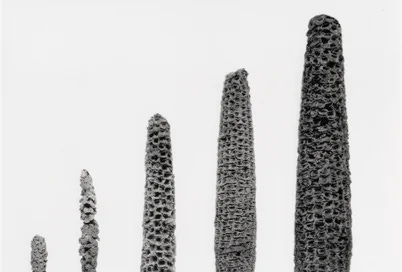



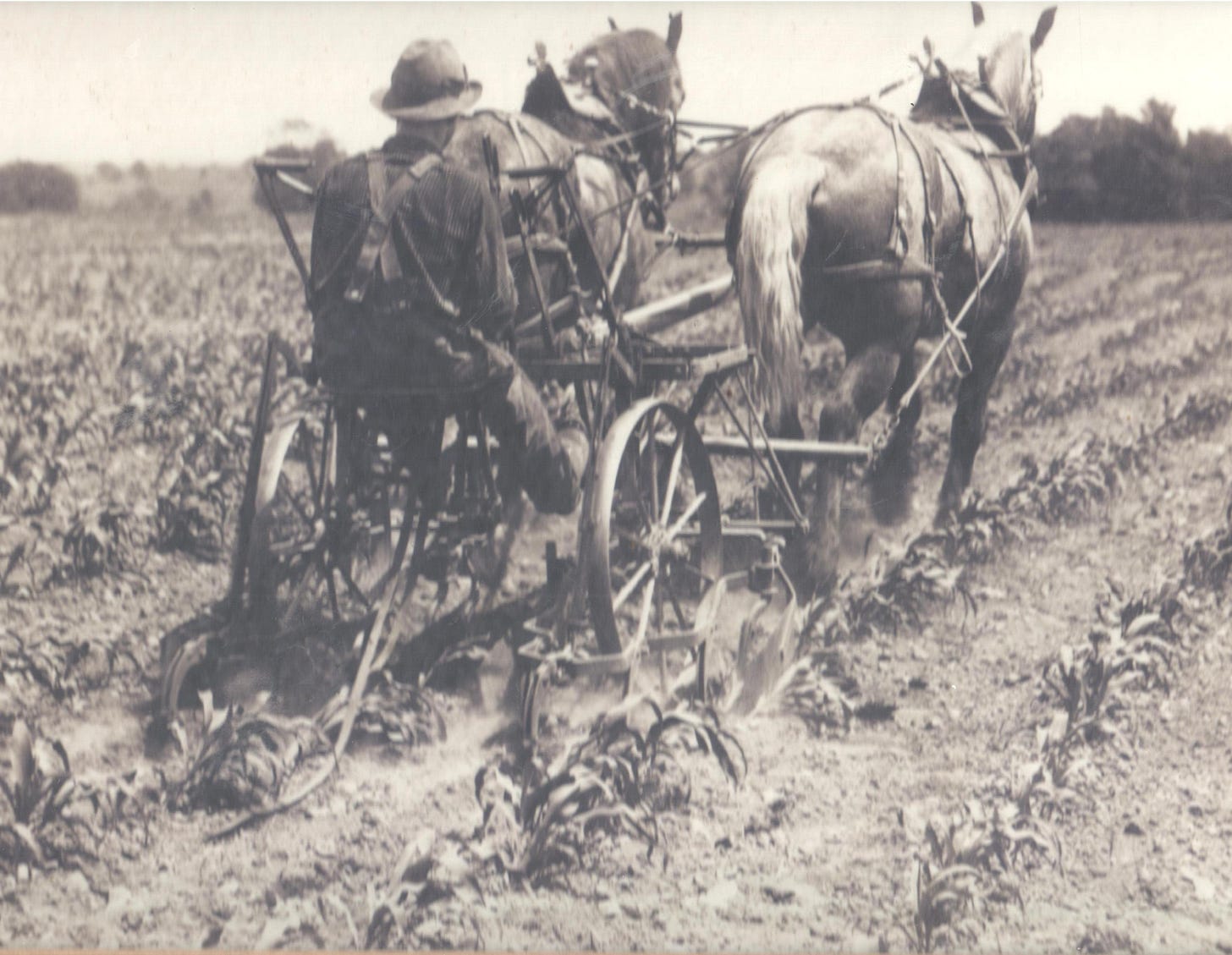
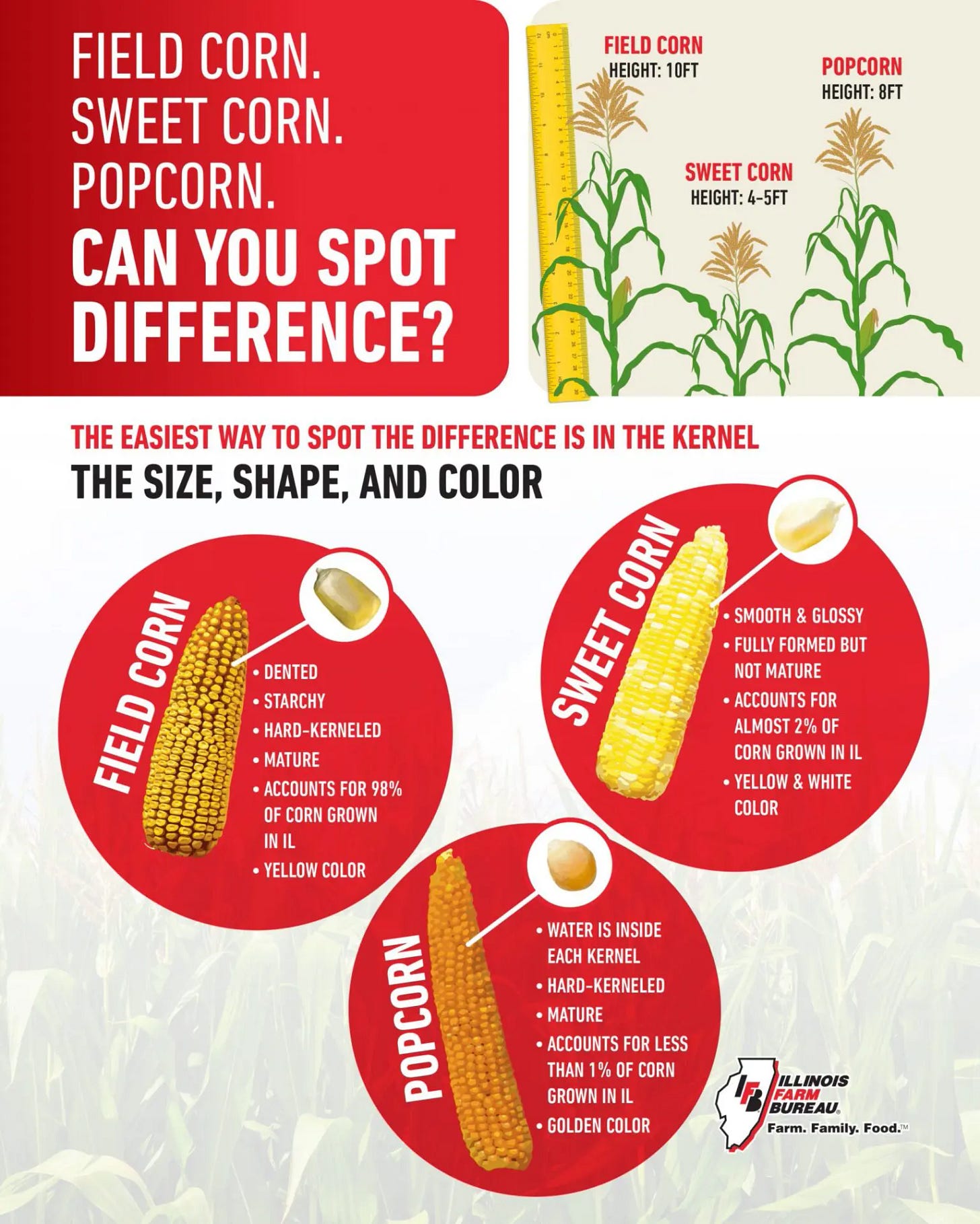


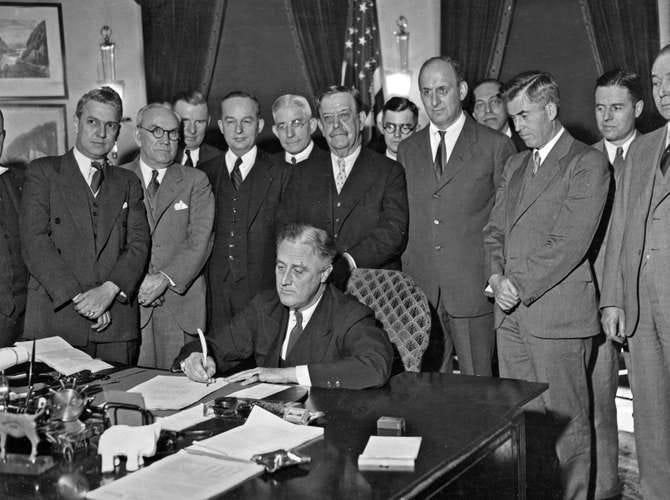
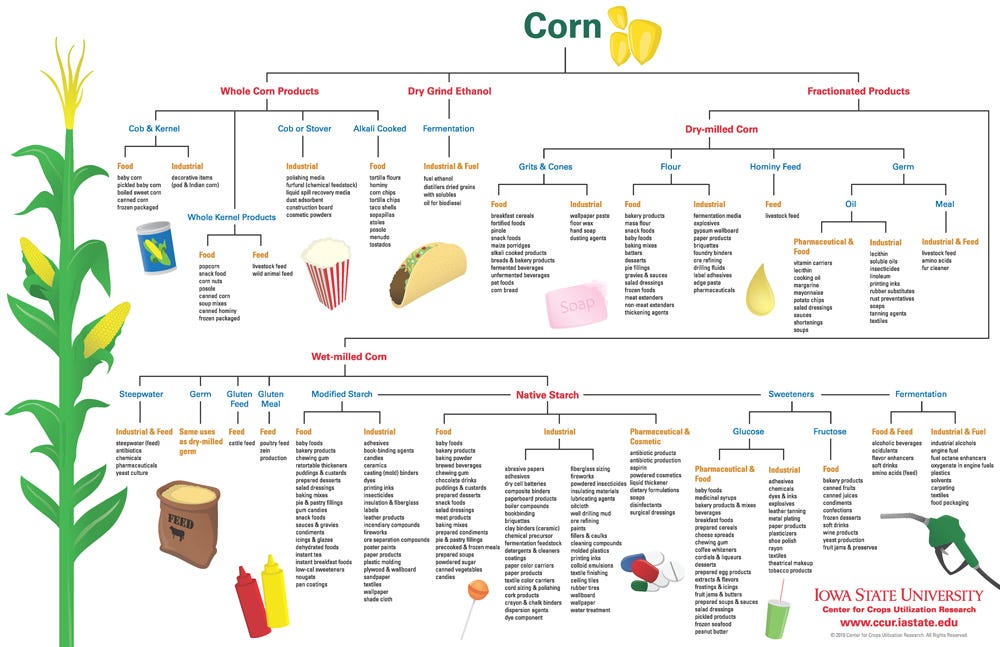
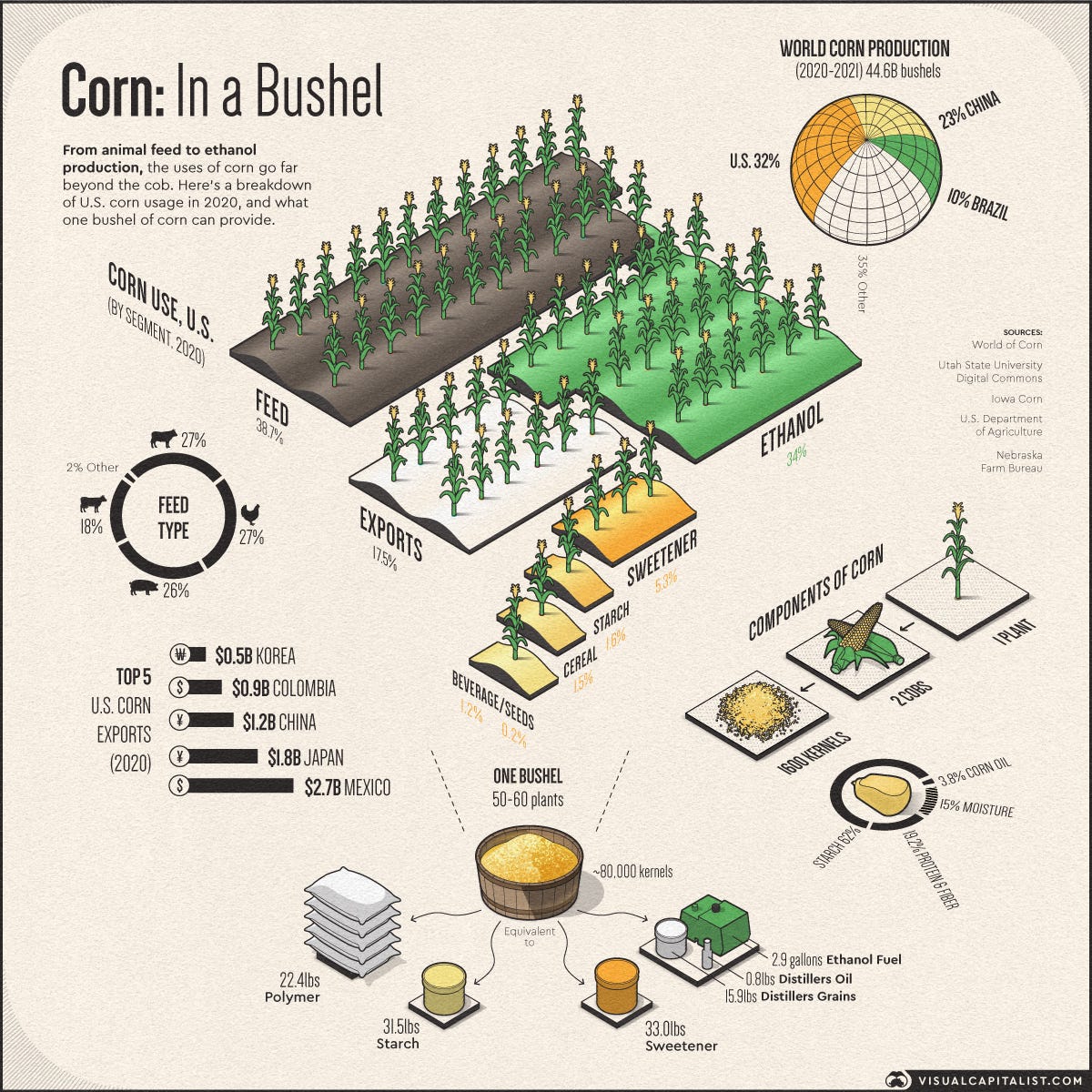
Hell yea thanks Andy